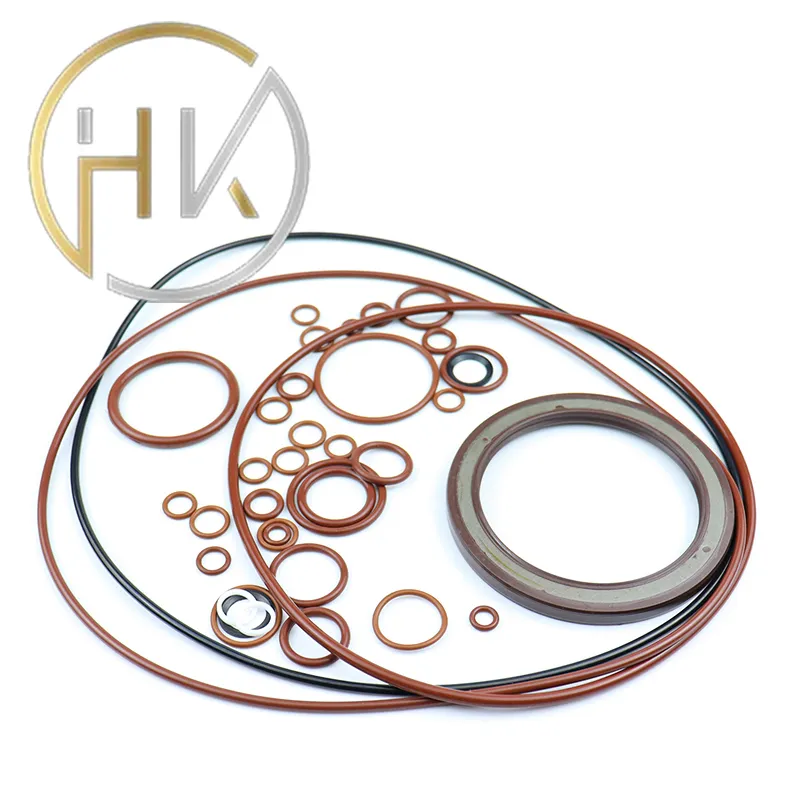Nov . 06, 2024 14:07 Back to list
Rear Wheel Hub Seal Maintenance Tips for Optimal Vehicle Performance
Understanding Rear Wheel Hub Seals A Comprehensive Guide
The rear wheel hub seal is a crucial component in the overall functionality and longevity of a vehicle's wheel assembly. Located at the back of the wheel hub, this small yet significant part plays a vital role in preventing the ingress of contaminants such as dirt, water, and debris while also retaining the lubricating grease inside the hub. Understanding the purpose, types, maintenance, and replacement of rear wheel hub seals is essential for any vehicle owner to ensure optimal wheel performance and safety.
Purpose of Rear Wheel Hub Seals
The primary function of rear wheel hub seals is to create a barrier that protects the internal components of the wheel hub from external elements. This is particularly important because the wheel hub houses bearings that allow the wheel to rotate smoothly. If contaminants enter the hub assembly, they can quickly degrade the bearings, leading to premature wear and potential failure. Additionally, the seals help contain the lubrication, preventing grease from leaking out and ensuring that the bearings remain adequately lubricated to function effectively.
Types of Rear Wheel Hub Seals
Rear wheel hub seals come in various types, each designed for specific applications. The most common types include
- Single Lip Seals These seals have a single elastomer lip that contacts the hub surface. They are effective in keeping contaminants out but may be limited in their ability to retain lubrication over longer periods.
- Double Lip Seals With two lips instead of one, double lip seals provide an enhanced barrier against contaminants. They are typically used in more demanding environments where extra protection is necessary.
- Grease Seals Specifically designed to retain grease within the wheel hub, these seals are vital in ensuring that the wheel bearings stay adequately lubricated, thus extending their life.
Signs of Wear and When to Replace
Like any component in a vehicle, rear wheel hub seals are subject to wear and tear. Some common signs that the seals may need replacement include
rear wheel hub seal

- Grease Leaks If you notice grease leaking from around the wheel hub, it’s a strong indicator that the seal has failed and needs to be replaced.
- Unusual Noise Grinding or rumbling noises from the wheel area can suggest that water or dirt has infiltrated the hub, causing damage to the bearings.
- Vibration Excessive vibration while driving can also point to issues with the hub assembly, which may be related to seal failure.
It is essential for vehicle owners to address these symptoms promptly, as neglecting to replace worn seals can lead to more significant and costly repairs down the line, including complete hub replacement.
Maintenance Best Practices
To prolong the life of your rear wheel hub seals, consider implementing the following maintenance practices
- Regular Inspections Periodically check your wheel hubs for any signs of grease leakage or deformation of the seals. Catching problems early can prevent more severe damage.
- Proper Lubrication Ensure that the wheel bearings are adequately lubricated. Use the recommended type of grease for your specific vehicle model, as the wrong lubricant can affect the seals and bearings.
- Moisture Protection If operating in particularly wet or off-road conditions, additional moisture protection measures, such as additional sealing products or protective plates, may be beneficial.
Conclusion
In conclusion, the rear wheel hub seal is an essential component of your vehicle that warrants attention. By understanding its purpose, recognizing the signs of wear, and following best practices for maintenance, vehicle owners can ensure their wheels function effectively, enhancing the vehicle's overall safety and performance. Regular care of the rear wheel hub seals is not just about extending their lifespan; it is about maintaining the integrity of the entire wheel assembly and ensuring a smooth, safe ride.
-
TCN Oil Seal Metal Ring Reinforcement for Heavy Machinery
NewsJul.25,2025
-
Rotary Lip Seal Spring-Loaded Design for High-Speed Applications
NewsJul.25,2025
-
Hydraulic Cylinder Seals Polyurethane Material for High-Impact Jobs
NewsJul.25,2025
-
High Pressure Oil Seal Polyurethane Coating Wear Resistance
NewsJul.25,2025
-
Dust Proof Seal Double Lip Design for Construction Equipment
NewsJul.25,2025
-
Hub Seal Polyurethane Wear Resistance in Agricultural Vehicles
NewsJul.25,2025
-
The Trans-formative Journey of Wheel Hub Oil Seals
NewsJun.06,2025
Products categories
















